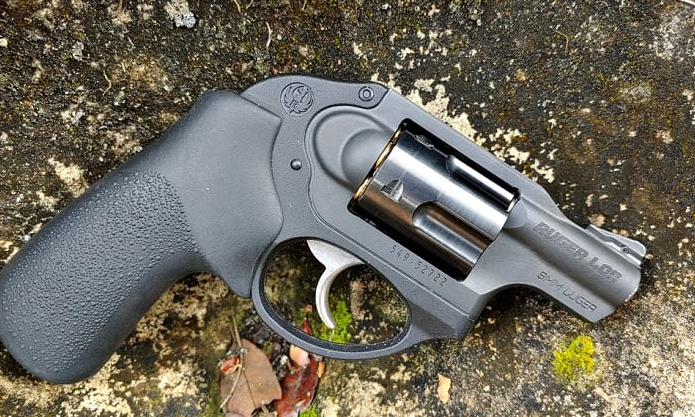Introduction
The Ruger LCR 9mm is a popular choice among firearm enthusiasts for its lightweight design and impressive stopping power. However, like any mechanical device, it can encounter issues that may hinder its performance.
In this article, we’ll dive into three common Ruger LCR 9mm problems and provide you with practical solutions. More importantly, we’ll provide practical solutions to help you tackle these challenges head-on. Stay informed so you can enjoy a smooth shooting experience every time you hit the range!
Top 3 Ruger LCR 9mm Issues & Solutions
The Ruger LCR 9mm is a popular choice among gun enthusiasts for its reliability and compact design. However, like any firearm, it may encounter some common Ruger LCR 9mm problems that users should be aware of.
- Fallout Issue
- Trigger Stuck
- Ejection Problem
1. Fallout Issue & Its Solution
The fallout issue is a common concern among Ruger LCR 9mm owners. This Ruger LCR 9mm problems often stems from inadequate maintenance or improper ammunition selection. When the revolver experiences excessive buildup of carbon and debris, it can lead to performance issues.
To remedy this Ruger LCR 9mm problems, regular cleaning is essential. After each use, ensure that you thoroughly clean the cylinder and barrel. Use quality cleaning solutions designed for firearms to break down any residue.
Another crucial step is to check your ammunition type. Using low-quality rounds may contribute to increased fouling in the firearm. Opting for higher-quality ammo could significantly reduce fallout problems.
If you notice persistent fallout even after proper care, consider consulting a professional gunsmith for further inspection. Regular attention will keep your Ruger LCR 9mm operating smoothly and reliably for years to come.
2. Trigger Stuck & Its Solution
A stuck trigger can be a frustrating Ruger LCR 9mm problems for any owner. This Ruger LCR 9mm problems often arises due to dirt or debris buildup around the trigger mechanism. When this happens, pulling the trigger may feel stiff or completely unresponsive.
To address Ruger LCR 9mm problems, begin by ensuring your firearm is unloaded and safe to handle. Carefully disassemble the revolver according to manufacturer guidelines. Pay close attention to the inside of the trigger guard and surrounding areas.
Using a soft cloth or brush, gently clean away any accumulated dirt or grime. A light application of gun oil can assist in lubricating moving parts but avoid over-oiling as it may attract more dust.
Reassemble your Ruger LCR carefully, testing the trigger’s function before heading out for practice. Regular maintenance can prevent this issue from recurring, allowing you to enjoy reliable performance each time you reach for your firearm.
3. Ejection Problem & Its Solution
Ejection problems can be frustrating Ruger LCR 9mm problems for owners. When spent casings fail to eject properly, it can compromise your shooting experience and create safety concerns.
One common cause of this Ruger LCR 9mm problems is a dirty or obstructed ejection port. Regular maintenance is essential. Make sure to clean the area thoroughly after each use, removing any buildup that could hinder the ejection process.
Another factor might be weak ammunition or cases that are out of spec. Using quality ammunition ensures reliable performance. Check the specifications before purchasing.
If you still encounter issues, inspect your extractor spring for wear or damage. A faulty extractor may not grip the casing effectively during ejection. Taking these steps should help minimize ejection issues with your Ruger LCR 9mm, ensuring smooth operation on every outing.
FAQs-Ruger LCR 9mm Problems
Q:1 What is the maximum capacity of the Ruger LCR 9mm?
The Ruger LCR 9mm typically has a five-round cylinder. This compact design offers balance between size and firepower.
Q:2 Can I use +P ammunition in my Ruger LCR 9mm?
Yes, the Ruger LCR can handle +P ammunition. However, frequent use may accelerate wear on components.
Q:3 How do I clean my Ruger LCR properly?
Cleaning involves disassembling the revolver carefully. Use a quality gun solvent and ensure all parts are dry before reassembly.
Q:4 Why is my trigger pull heavier than expected?
A heavy trigger pull can be due to factory settings or accumulated dirt. Regular maintenance might alleviate this issue for smoother operation.
Q:5 Is there a warranty for the Ruger LCR?
Ruger typically provides a limited lifetime warranty on their firearms. Always consult their customer service for specific details regarding coverage.
Conclusion
When it comes to the Ruger LCR 9mm problems, being aware of potential problems can save you time and frustration. The firearm is known for its reliability, but like any mechanical device, issues may arise. Knowing how to troubleshoot these common concerns will enhance your shooting experience.
Staying informed allows you to address Ruger LCR 9mm problems head-on. Whether it’s fallout from improper chemical exposure or a stuck trigger that disrupts functionality, having solutions at hand ensures you’re always ready for action. Furthermore, understanding ejection problems can keep your sessions smooth and uninterrupted.
Always be proactive about any unusual behavior with your firearm. Taking the right steps early can prevent minor inconveniences from escalating into significant concerns down the road. Keep enjoying every moment spent with your Ruger LCR 9mm by staying prepared and informed.

